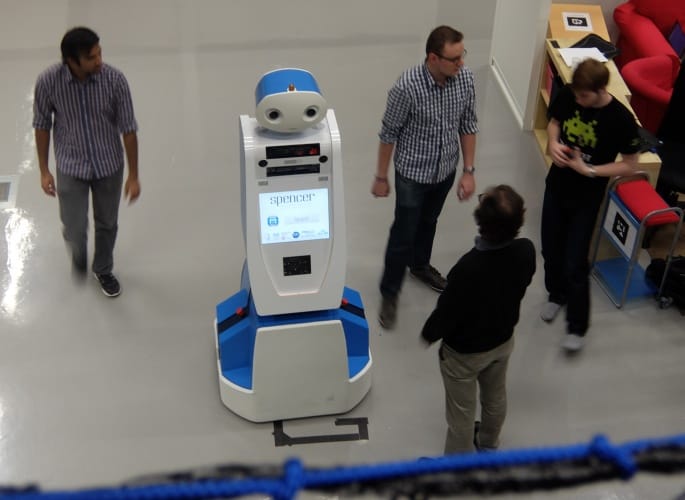
‘Spencer’ is a collaboration between researchers and businesses from five countries, including Dutch airline KLM and Örebro University in Sweden. The initiative, which is funded by the European Commission, came about due to the costs KLM was incurring from novice passengers getting lost and missing flights.
Using maps pre-loaded by the team at Örebro, Spencer will assist passengers unfamiliar with international airports, leading them through the terminals from one gate to the next. The robot is equipped with laser beams to measure the distance to various obstructions.
“Navigating an airport is challenging,” said Achim Lilienthal, professor of computer science and the project leader at Örebro University. “There is a lot of glass and a constantly changing environment in terms of temporary obstructions, such as parked luggage trolleys and people everywhere.”
According to Lilienthal, fixed obstructions such as walls are relatively easy to deal with. The same goes for people in motion, as Spencer can make calculations based on observed speed and direction. But things get trickier when more uncertainty comes into play.
“Objects that are temporarily permanent so to speak, are the most difficult to work around,” Lilienthal explained. “We do not know, for instance, how long that luggage trolley will be parked in a particular spot, which makes it harder for the robot to determine its own location. We are working on a general map representation that includes and allows the robot to handle temporarily permanent objects.”
Spencer’s various components will be brought together into one system during an upcoming integration week staring on November 30. Adjustments will then be made before a more thorough trial in March, which will be attended by representatives from the European Commission.

Project to investigate hybrid approach to titanium manufacturing
What is this a hybrid of? Superplastic forming tends to be performed slowly as otherwise the behaviour is the hot creep that typifies hot...